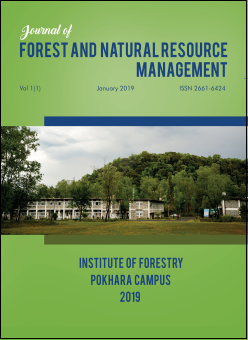Impacts of Climate Change on Water Availability and Reservoir Based Hydropower
A case study from Kulekhani Hydropower Reservoir, Nepal
DOI:
https://doi.org/10.3126/jfnrm.v1i1.22653Keywords:
Kulekhani hydro-electric reservoir, climate change impacts, water levelAbstract
The impacts of climate change (CC) are observed in several sectors, and water resource is one of them. This study explored the impacts of CC on water availability and reservoir based hydropower. It determined the impacts of CC in the reservoir water level and major watershed characteristics and has explored the perception of people on CC impacts in the reservoir. The primary data were collected through questionnaire and field survey and secondary data were gathered from different literatures. The analysis of meteorological data generated from meteorological station. temperature and rainfall data, discharge of Kulekhani River, monthly data of reservoir level and annual energy generation revealed increasing pattern of temperature and decreasing seasonal and annual precipitation in the study area. Similarly, because of the increased sedimentation, the water level of the reservoir has been increasing though the precipitation has been observed declining. Consideration could be taken while designing such hydropowers to hold water year-round, resulting minimal power shortage. A clear institutional direction and strategies could make reservoir based hydropower climate resilient and enable sustainable generation of electricity.
Downloads
Downloads
Published
How to Cite
Issue
Section
License
© Institute of Forestry, Pokhara Campus




